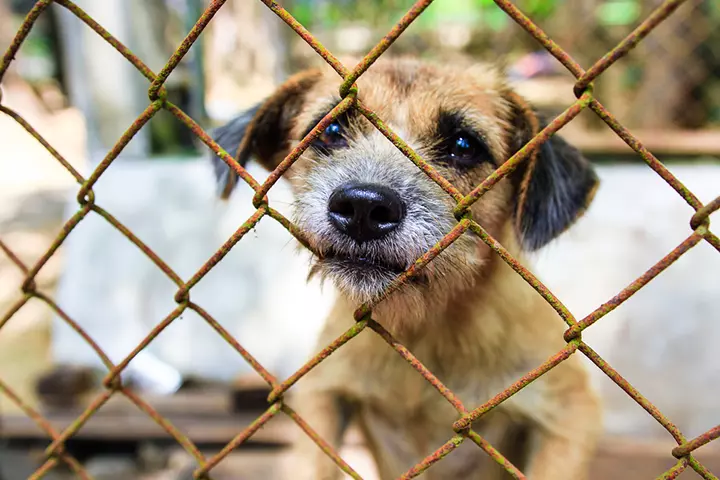In the labyrinth of human behavior, few subjects spark as much debate and concern as the interaction between children and animals. The question, “Is it normal for boys to harm animals?” reverberates through both psychological discussions and public discourse. At its core, this inquiry delves into the complexities of childhood development, the nuances of behavior, and the potential implications of cruelty to animals.
To explore this issue, one must consider the developmental phases of childhood, particularly in boys, who statistically exhibit higher rates of aggression during early years. This aggression can manifest in various forms, including bullying and, in more troubling instances, the maltreatment of animals. While such behavior is alarming, it is crucial to differentiate between transient, exploratory behavior that is often part of normal development and actions that may signal deeper psychological concerns.
During the early formative years, boys often engage in play that involves aggression—yet this play typically does not translate into a desire to inflict real harm. For many, the act of play is a method of exerting control, testing boundaries, and understanding their environment. Herein lies a compelling metaphor: childhood is akin to a canvas, where the brush strokes of experience often ebb and flow between innocent curiosity and misguided aggression. This canvas illustrates a vital point: exploration and understanding are integral to development, but when these strokes begin to depict intentional harm, one must take notice.
Psychologically, harming animals can sometimes be seen as a reflection of a larger spectrum of emotional and behavioral issues. Studies in developmental psychology suggest that children who exhibit cruelty to animals may be grappling with unresolved feelings of frustration, isolation, or even trauma. From this perspective, animal harm can serve as a proxy, an outlet for emotions that children may not yet have the tools to express effectively. This conflation of emotional tumult and behavioral manifestation marks a critical intersection that warrants attention and intervention.
Moreover, the social environment in which a child is raised plays an instrumental role in shaping behaviors. In neighborhoods where aggression is normalized—where violence permeates daily interactions—children, especially boys, may assimilate these behaviors as acceptable. Here, the predator-prey dynamic can often overshadow the innate empathy that humans possess, leading to a disconnection from the ethical treatment of others, including animals. This phenomenon raises an essential question: At what point does societal influence begin to eclipse the intrinsic values of compassion and kindness?
Understanding the psychology behind these behaviors also involves examining the uniqueness of temperament and personality. Some children may be predisposed to aggression due to genetic factors or environmental stressors. Behavioral observations suggest a spectrum wherein some boys may find themselves in the throes of impulsivity, leading to irresponsible interactions with animals. In stark contrast, others may develop a profound empathy toward creatures large and small. This often aligns with their upbringing, parental values, and exposure to compassionate behavior.
As children progress through their formative years, parental guidance becomes paramount. The influence of caregivers cannot be overstated; nurturing environments that emphasize empathy, compassion, and respectful treatment of all living beings can serve as antidotes to harmful tendencies. Furthermore, dialogue surrounding the consequences of animal cruelty is vital. Teaching children that empathizing with animals not only enriches their emotional landscape but also fosters a more profound understanding of human relationships is essential. This holding of hands, guiding them from the abyss of harmful actions toward the light of compassion, embodies the responsibility adults share in shaping future generations.
Additionally, the educational system plays a significant role in curbing tendencies toward animal cruelty. Incorporating humane education into school curricula can nurture respect for living creatures. Programs that encourage empathy, responsibility, and respect—while also explaining the psychological impacts of violence—can resonate with young minds, prompting them to reflect critically on their behaviors.
The psychological implications extend beyond the immediate act of cruelty; they may also foreshadow future behaviors. A pattern of animal abuse during childhood has been linked to antisocial behaviors and increased aggression in adolescence and adulthood. This connection lays bare the importance of early interventions, as reversing these behaviors can set children on a healthier trajectory. Drawing a parallel, it is much like tending to a fragile sapling; with the right care and attention, it can grow into a sturdy tree, bearing fruit long into the future.
In summation, the landscape of childhood psychology reveals a complex interplay between natural curiosity and aggressive tendencies that sometimes manifests in harmful interactions with animals. While it is not uncommon for boys—caught in the whirlwind of testing boundaries—to exhibit behaviors that may cause distress to animals, it is imperative to recognize these actions as indicators for deeper issues that may require critical intervention. By fostering empathy, providing supportive environments, and educating children about the consequences of their actions, society can mitigate future incidences of cruelty and, ultimately, cultivate a generation characterized by compassion rather than aggression. The fabric of humane treatment towards all living beings is one that needs weaving into the very essence of human upbringing, ensuring that the tapestry of societal interactions reflects kindness across species.









